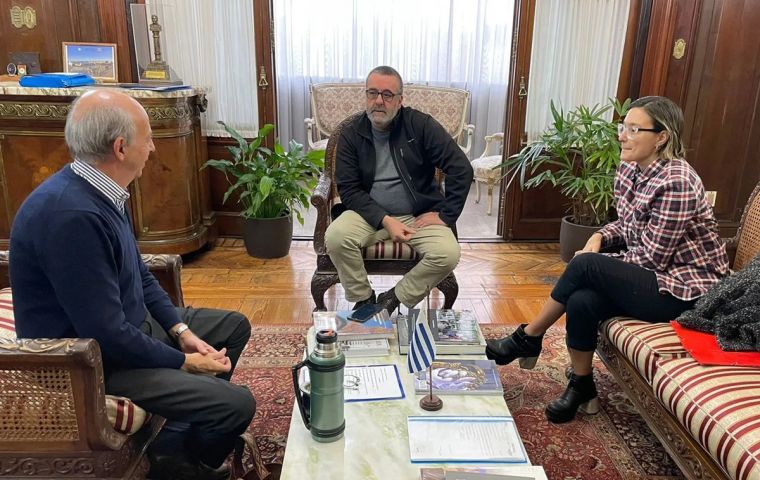
MONTEVIDEO, June 10 (NNN-MERCOPRESS) — Uruguay’s Air Force (FAU) will assist the Human Rights Institute in tracing possible burials of people forcibly disappeared during the military dictatorship using state-of-the-art laser technology, Defense Minister Javier García announced.
Frente Amplio (Broad Front) opposition Deputies Carlos Rodríguez and Micaela Melgar made the request and held a meeting with García, after which the military branch pledged to commit some of its strategic equipment to the topographic air search for possible clandestine burials from the 1973-1985 period.
Laser images have been used successfully in Argentina and Mexico, Melgar told reporters.
Minister Garcia recalled that the original proposal to use this technology has been submitted by the National Human Rights Institute (INDDHH), which contemplated hiring a foreign company to survey Uruguayan military units, which García found unacceptable.
The Minister offered instead to deploy Air Force technology which is suitable for the task.
Air Force Chief of Staff Luis De León and Human Rights authorities finalized the details Thursday regarding the use of LiDAR (Light Detection And Ranging) technology, which is based on a laser scanning sensor that emits pulses and registers the returns against the surface.
It consists of a scanner that makes it possible to produce, from the air, a relief map of any terrain by removing vegetation and to reveal exactly whether there have been, in particular, artificial earthworks, which would indicate the possibility of a burial.
Last month, LiDAR allowed a team of archaeologists in Bolivia to locate two previously unknown pre-Columbian settlements under trees in the Amazon jungle.
The INDDHH had requested clearance for the entry from Argentina of an aircraft equipped with this technology, which Defense authorities refused citing sovereignty reasons. “It is a concept of defense and security that should remain in the hands of the Uruguayan State,” the Ministry explained. It found it unproper that “a State or a foreign private company has a mapping of our military units.”
García insisted the FAU already uses LiDAR for other purposes, such as the one stemming from an agreement with the Technological University (Utec).
“Given that those who know what happened do not reveal it, for us it implies covering larger areas,” INDDHH President Wilder Tayler explained as his agency once again called all those who might have information leading to the finding of those burials to come forward in order “to give an answer to society, to the families, who have been demanding [it] for more than 40 years.”
The identity of those who provide information will be kept confidential, the INDDHH guaranteed. “If you know something, it is time to tell.” — NNN-MERCOPRESS




